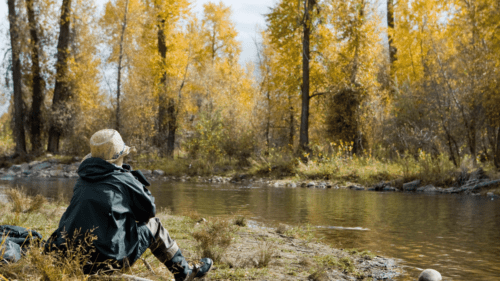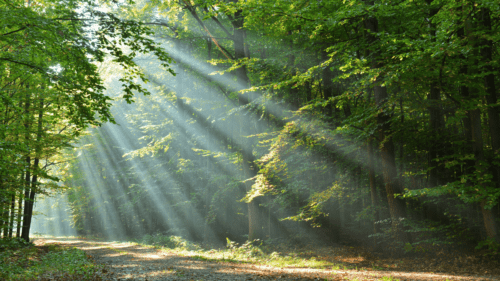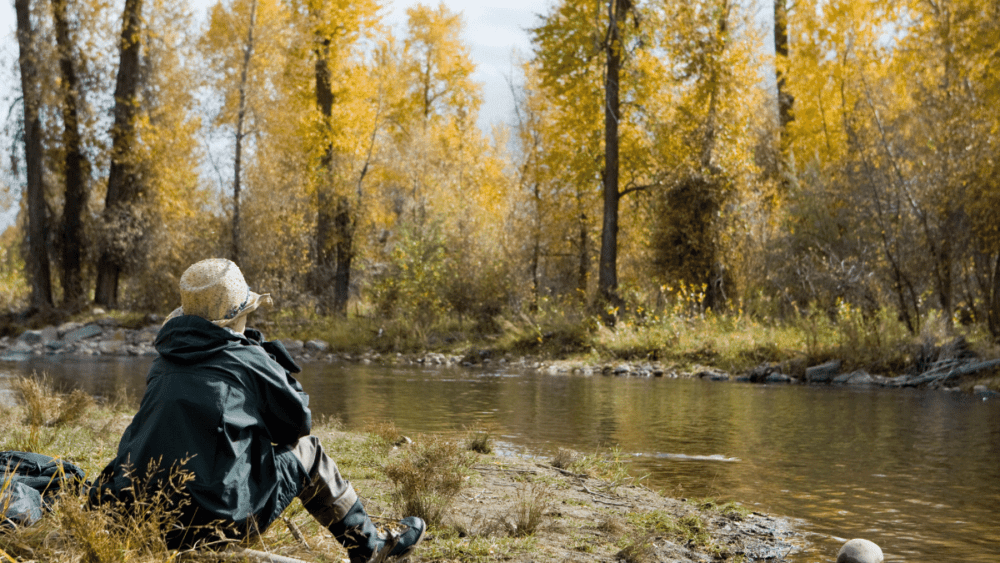As I quickly found out forest bathing is no more complicated than simply going for a wander in your local woods or park. The only difference is that rather than walking for exercise, you take the time to focus on the natural world around you.
I, however, decided on Sit Spot for my therapy. Sit Spot is a simple but powerful Forest Bathing practice that encourages you to become more mindful and to connect with nature.
Sit Spot in its most basic form:
1. You just go outside.
2. Find a place in nature to sit down.
3. Practice opening your senses and observing nature.
4. Repeat as often as you can.

Simply find yourself a place in nature where you can sit comfortably, allowing you to immerse yourself in the world around you.
Focus on what you can see, what you can hear, what you smell and what you can feel, when you sit quietly, you may be surprised at what you notice around you.
To begin my Sit Spot bathing experiment, I found myself in a familiar place down by the River Spey sitting under a tree watching and listening as the river flowed past.
Although clearly not a forest, much of the river has trees on either side. In the past pine trees from the forests of Rothiemurchus and Abernethy were floated down the river to Spey Bay before heading to Kingston, London.
It was a cold spring Saturday morning with a dusting of snow on the ground. There was the occasional rustle in the grassy bank behind me, rabbits investigating my presence then disappearing in haste, only to return when the perceived threat was gone.
The river was running high and fast due to frequent snow fall and snow melt. A lone Mallard floated downstream, this eemed a little out of place as they are usually found on Milton Loch, perhaps it was on a journey and couldn’t be bothered to fly? He was coasting down the river on the current at a good rate.
I spotted a small leafless branch floating past and wondered –would it get tangled in an overhanging tree? I watched until the branch was out of sight, then wondered if it would make it all the way to Spey Bay then finally the sea, who knows?
I reminisced about times when I fished and swam in the river, much to my mother’s dismay, and could hear her voice saying: “If the bailiff catches you, I’ll deny your mine”. She was hilarious.
What I’d discovered today was that I have forest bathed many times in the past and still do, I just never realised it.
Our busy lives can have a significant impact on our mental health and wellbeing, so naturally, many of us head outside as a way to unwind.
Whether it’s a family dispute, work related stress or just the need for some time to think clearly, forest bathing is proven to deliver lasting benefits to both physical and mental wellbeing and create a profound connection to nature.
Forest bathing can help free the mind up from the distractions of everyday life and allow it to focus more fully on things that matter to us. It allows your brain to think ‘outside the box’ to come up with solutions to everyday problems.
There is a growing understanding that, although technology enhances our lives in many ways, we need to switch off from it regularly.
Don’t think about it as being alone, think of it as being alone with nature.
Remember: You don’t require a swimsuit for forest bathing, but tree trunks are advisable ☺
Top tips for forest bathing
1. Pick a quieter time of day. There’ll probably be fewer people around if you go to the woods in the early morning or later in the evening. Depending on your schedule you could also try weekday afternoons.
2. Try turning off your smart phone (devices). An hour or two of digital detoxing will help you to slow down and focus on your surroundings.
3. Take your time. Wandering slowly through the trees can be very meditative, or you can settle down on a log to really take in your surroundings. If you stay still and quiet enough you’re also more likely to see wildlife, such as deer and birds.
4. Use all of your senses. When did you last touch a tree trunk and feel the rough bark, or notice the way sunlight catches the leaves, or try to pick out all the different types of birdsong around you?
5. Pay attention to your breathing. This is a great way to relax and clear your mind, so you can focus on what’s around you. Try closing your eyes and taking ten slow, deep breaths in and out, then gently open your eyes and bring your awareness back to the forest.
6. Stay as long as you feel comfortable but if you’ve got a busy schedule then even just 10 minutes in nature can help you to feel refreshed.




